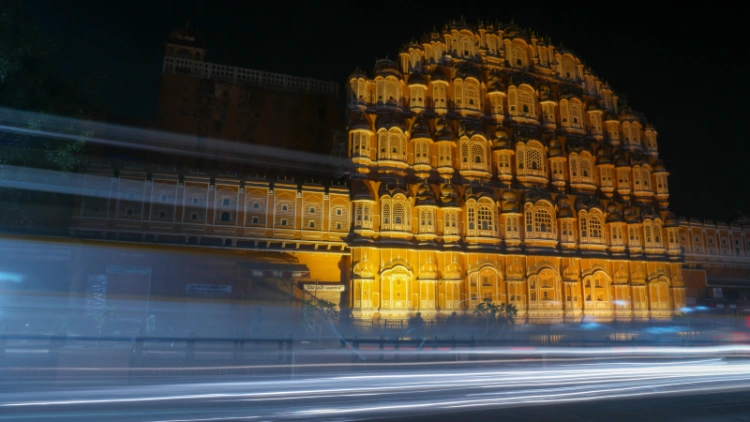Jaipur, the Pink City, is a photographer’s paradise. With its stunning architecture, vibrant culture, and picturesque landscapes, Jaipur offers endless opportunities for capturing breathtaking images. In this comprehensive guide, we’ll explore how to photograph Jaipur like a pro, covering the best locations, tips, and techniques to help you capture the essence of this beautiful city.
Why Jaipur is a Photographer’s Dream
Rich Architectural Heritage
- Iconic Landmarks: Jaipur is home to iconic landmarks like Hawa Mahal, Amber Fort, and City Palace, each offering unique photographic opportunities.
- Intricate Details: The intricate carvings, vibrant colors, and grand structures provide endless inspiration for photographers.
Vibrant Culture and Festivals
- Cultural Events: Festivals like Diwali, Holi, and Teej offer vibrant and dynamic scenes to capture.
- Street Life: The bustling markets and lively streets of Jaipur are perfect for candid and street photography.
Scenic Landscapes
- Natural Beauty: The surrounding Aravalli Hills and serene lakes provide stunning backdrops for landscape photography.
- Golden Hours: The soft light during sunrise and sunset enhances the beauty of Jaipur’s landscapes and architecture.
Best Photography Locations in Jaipur
Hawa Mahal: The Iconic Landmark
Why It’s Photogenic:
- Unique Architecture: The Hawa Mahal’s honeycomb structure and intricate latticework make it a favorite subject for photographers.
- Light and Shadows: The play of light and shadows on the palace’s façade creates stunning visual effects.
Tips:
- Early Morning: Visit early in the morning to capture the palace in soft, golden light.
- Different Angles: Experiment with different angles and perspectives to capture unique shots.
Amber Fort: A Majestic Backdrop
Why It’s Photogenic:
- Grand Architecture: The fort’s grand courtyards, intricate carvings, and panoramic views offer endless photographic opportunities.
- Reflections: The Maota Lake in front of the fort provides beautiful reflections, especially during sunrise and sunset.
Tips:
- Golden Hours: Visit during sunrise or sunset for the best lighting conditions.
- Wide-Angle Lens: Use a wide-angle lens to capture the fort’s expansive courtyards and stunning views.
City Palace: A Royal Setting
Why It’s Photogenic:
- Opulent Interiors: The palace’s opulent interiors, including the Chandra Mahal and Mubarak Mahal, are perfect for interior photography.
- Colorful Courtyards: The palace’s colorful courtyards and gardens offer vibrant backdrops for photos.
Tips:
- Guided Tour: A guided tour can provide insights into the best spots for photography within the palace.
- Tripod: Use a tripod for stable shots, especially in low-light conditions.
Jantar Mantar: An Astronomical Marvel
Why It’s Photogenic:
- Unique Instruments: The astronomical instruments at Jantar Mantar are both fascinating and photogenic.
- Geometric Patterns: The instruments’ geometric patterns and symmetry make for compelling compositions.
Tips:
- Daylight: Visit during the day to capture the instruments in action.
- Close-Ups: Use a macro lens for close-up shots of the intricate details.
Nahargarh Fort: Panoramic Views
Why It’s Photogenic:
- Panoramic Views: The fort offers panoramic views of Jaipur, especially during sunset.
- Serene Atmosphere: The fort’s serene atmosphere and scenic surroundings make it a great spot for landscape photography.
Tips:
- Sunset: Visit during sunset for stunning views and golden light.
- Wide-Angle Lens: Use a wide-angle lens to capture the expansive views.
Photography Tips and Techniques
Golden Hours: Sunrise and Sunset
Why It’s Important:
- Soft Light: The soft, warm light during golden hours enhances the beauty of your subjects.
- Long Shadows: The long shadows create depth and dimension in your photos.
Tips:
- Plan Ahead: Arrive early to scout locations and set up your equipment.
- Experiment: Experiment with different compositions and angles to make the most of the golden light.
Composition and Framing
Why It’s Important:
- Visual Appeal: Good composition and framing make your photos more visually appealing.
- Storytelling: Effective composition helps tell a story and draw the viewer’s eye to the subject.
Tips:
- Rule of Thirds: Use the rule of thirds to create balanced and interesting compositions.
- Leading Lines: Use leading lines to guide the viewer’s eye through the photo.
- Symmetry: Look for symmetrical patterns and structures to create striking compositions.
Capturing Culture and Street Life
Why It’s Important:
- Authenticity: Capturing culture and street life adds authenticity and depth to your photos.
- Dynamic Scenes: The vibrant and dynamic scenes of Jaipur’s streets are perfect for candid photography.
Tips:
- Candid Shots: Capture candid moments to convey the essence of daily life in Jaipur.
- Respect Privacy: Always ask for permission before taking photos of people, especially in rural areas.
Night Photography
Why It’s Important:
- Unique Perspective: Night photography offers a unique perspective of Jaipur’s landmarks and cityscape.
- Light Trails: Capturing light trails from traffic and city lights can create stunning visual effects.
Tips:
- Tripod: Use a tripod for stable shots in low-light conditions.
- Long Exposure: Experiment with long exposure settings to capture light trails and starry skies.
Final Thoughts
Jaipur is a photographer’s dream, offering a wealth of opportunities to capture its rich history, vibrant culture, and stunning landscapes. By following these tips and techniques, you can create a visual narrative that truly captures the essence of the Pink City. Use this guide to plan your photography adventure and make the most of your time in Jaipur.

